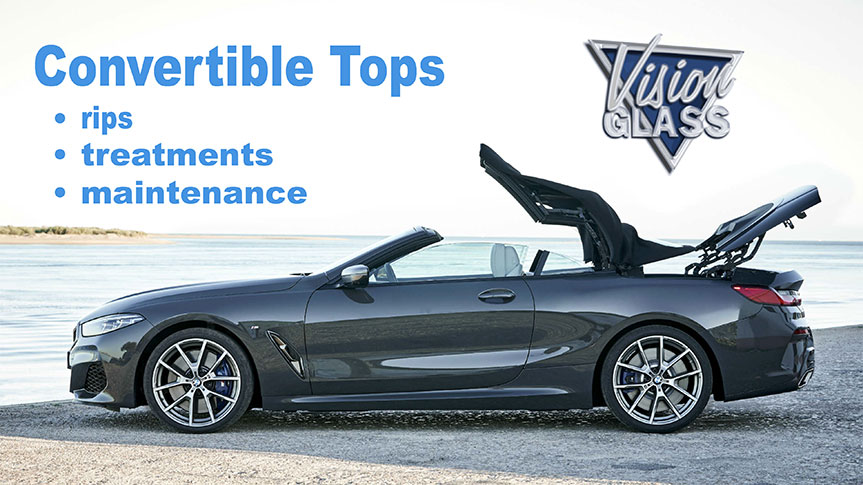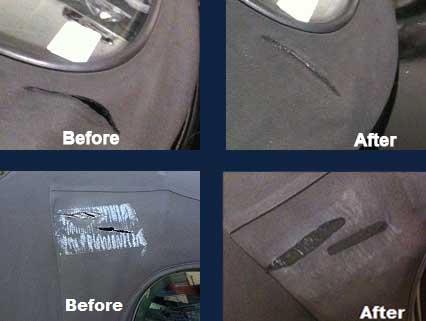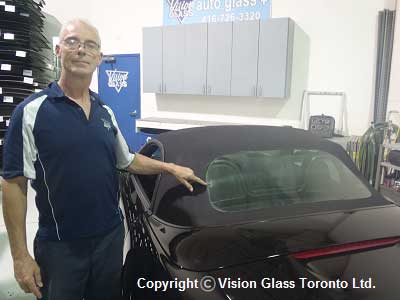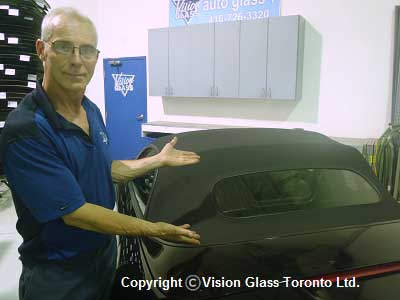
Convertible Top repair and service is a highly specialized field. Many modern-day convertibles have complex electrical systems with electronic control modules, hall sensors, switches and harnesses. They have multi-stage operations which require calibration and servicing which should not be attempted without the correct diagnostic expertise. Electrical systems are often paired with extensive hydraulic systems with numerous lines, cylinders, valves, solenoids and pumps. Sometimes repairs in one hydraulic line will re-pressurize the system causing a new leak at another location. The older the car, the more likely it is to occur.
Common Issues with Newer Convertible Tops
- Newer vehicles require a constant supply of power. If your battery is old, has required a boost or has been disconnected, you may have affected the calibration of the top.
- A convertible top should NEVER be operated while the vehicle is in motion.If a convertible top malfunctions, DO NOT OPERATE the top. So many times we see problems exasperated by overuse, when serious issues could have been avoided by having the top serviced early.
- Do NOT disassemble the top. As part of the diagnostic process, we search for signs of mechanical and electrical failure. Diagnosis becomes far more expensive when we are not given the opportunity to investigate the history of the issue.
Common Issues with Older Convertible Tops
- The convertible needs to be fully operational for our technicians to be able to replace the top. Otherwise, be prepared for sometimes costly, unexpected mechanical repairs and delays to completion.
- Hardware such as ball joints, shims, rivets, levers and folding systems tend to wear out over time causing the operation to be quite sloppy.
- Electric motors and hydraulic pumps wear out as they get older. Combined with worn out hardware, smooth operation can be compromised. Repairs can become comprehensive.
- Even with restored vehicles, old tops tend to disassemble poorly. Screws, nuts and bolts, tacking strips, felt pads, springs, cables, staples and weathered material can get damaged during the repair process.
- Delivery times for parts are out of our control.
- New parts are often not available, so replacement parts are often used and/or refurbished. This is not a ideal scenario and may not restore operation to original specifications.
- Many older models have leak issues. They were simply not engineered to modern day specifications and can, from a design perspective, have unresolvable leak issues.
- Original rubber seals are rarely available and aftermarket seals rarely fit to original specifications.
- Repairs are time consuming. Often it can take weeks to deal with rust repairs, parts to come in, tacking strips, pads, cables, springs to be manufactured and replaced. Steaming the top is also very time consuming, especially in the winter.
- Sadly… spending money on repairs does not in any way mean that you won’t need to invest even more money repairs in the future. You can repair electronic switches, drive away happy, only to return with an entirely different issue only months later.
- Twilfast or similar materials tend to show early signs of wear at folding points.













